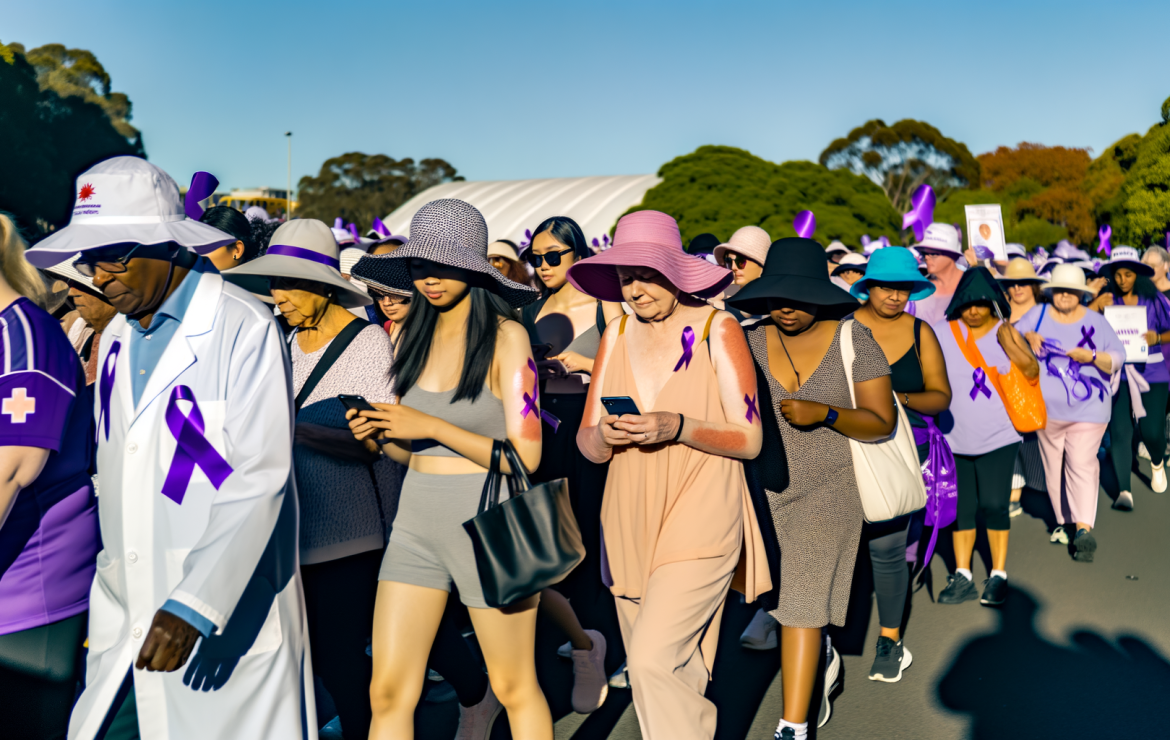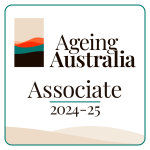Melanoma March 2025: A Step Towards Zero Deaths in Australia

Melanoma March: Raising Awareness and Saving Lives in Australia
Every 30 minutes, someone in Australia is diagnosed with melanoma. Every six hours, someone loses their life to this deadly skin cancer. These stark statistics underscore the critical importance of Melanoma March, an annual initiative that has become a cornerstone in the fight against Australia’s most common cancer affecting young adults. This comprehensive campaign not only raises awareness about melanoma but also generates crucial funds for groundbreaking research, emphasizing the vital importance of regular skin checks and sun safety practices.
The Genesis and Evolution of Melanoma March
Melanoma March was founded in 2012 by James Economides, a father who lost his son Michael to melanoma in 2008. What began as a personal mission to prevent other families from experiencing similar tragedy has grown into a nationwide movement. Economides reflects on the initiative’s origins: “Back in 2008, there was little they could do, so we wanted to help raise money for much needed clinical trials so no other family would have to go through what we went through.”
Now in its 14th year, Melanoma March has become a pivotal event in Australia’s public health calendar. Its relevance has only increased over time, given Australia’s persistently high melanoma rates – the highest in the world. The campaign’s focus on young adults (20-39 year-olds) is particularly crucial, as melanoma remains the most common cancer affecting this age group in Australia.
The Multifaceted Approach of Melanoma March
Melanoma March operates on several key fronts, each contributing to its overarching goal of reducing melanoma’s impact on Australian lives:
1. Awareness Raising
At its core, Melanoma March is about education. The campaign utilizes various channels – from community events to digital platforms – to inform Australians about the risks of melanoma, its early warning signs, and preventative measures. This widespread dissemination of knowledge is crucial in a country where sun exposure is high and outdoor activities are deeply ingrained in the culture.
2. Fundraising for Research
A significant portion of Melanoma March’s efforts is dedicated to raising funds for cutting-edge melanoma research. These funds are instrumental in advancing our understanding of the disease and developing more effective treatments. The Melanoma Institute Australia (MIA), which organizes Melanoma March, channels these funds into pioneering studies that have already yielded remarkable results.
3. Promoting Early Detection and Sun Safety
Melanoma March places a strong emphasis on the importance of early detection through regular skin checks and the adoption of sun-safe behaviors. The campaign provides resources and information on how to perform self-examinations and recognize potential warning signs, encouraging Australians to be proactive about their skin health.
The Current Landscape: Statistics and Expert Insights
Recent statistics paint a sobering picture of melanoma’s impact in Australia:
- One person is diagnosed with melanoma every 30 minutes.
- One person dies from melanoma every six hours.
- Approximately 45% of advanced melanoma patients do not respond or become resistant to new immunotherapy treatments.
- It is estimated that around 1,300 Australians will die from melanoma this year.
These figures underscore the urgency of the work being done through Melanoma March. However, there is hope on the horizon. Recent advances in treatment, pioneered by MIA clinicians and researchers, have tripled the life expectancy for advanced melanoma patients.
Experts unanimously agree on the critical importance of early detection. Dr. Sarah Thompson, a leading dermatologist, emphasizes: “Early detection is our most powerful weapon against melanoma. Regular skin checks can literally save lives by catching melanoma in its earliest, most treatable stages.”
The role of community education is equally vital. Dr. Michael Chen, a public health expert, notes: “Widespread community awareness about melanoma prevention and early detection is crucial. Initiatives like Melanoma March play a pivotal role in disseminating this life-saving information to the public.”
The Impact and Future of Melanoma March
The impact of Melanoma March extends far beyond its annual events. It has contributed significantly to:
- Increased Public Awareness: There’s been a noticeable uptick in public knowledge about melanoma, its risk factors, and prevention strategies.
- Advancements in Research: Funds raised through Melanoma March have supported groundbreaking studies, leading to improved treatments and better patient outcomes.
- Community Support: The events provide a platform for patients, survivors, and families to connect, share experiences, and support each other.
- Healthcare Provider Engagement: Many clinics and healthcare providers actively participate in Melanoma March, offering free skin checks and educational sessions.
Looking to the future, Melanoma March is poised to evolve further:
- Increased Community Engagement: There’s a growing trend towards more localized, community-driven events that cater to specific regional needs and demographics.
- Integration of Technology: The use of digital platforms and mobile apps for skin tracking and sun safety reminders is becoming more prevalent in awareness campaigns.
- Expanded Research Focus: With ongoing fundraising efforts, there’s potential for broader and more innovative research initiatives, particularly in the areas of immunotherapy and targeted treatments.
Protecting Yourself from Melanoma: A Step-by-Step Guide
While Melanoma March raises awareness, it’s crucial for individuals to take proactive steps in protecting themselves. Here’s a comprehensive guide:
-
Perform Regular Self-Skin Checks
- Examine your skin head-to-toe once a month.
- Use a mirror or ask a partner to help check hard-to-see areas.
- Look for any new moles or changes in existing ones.
-
Understand the ABCDE Rule for Melanoma Detection
- A: Asymmetry – One half of the mole doesn’t match the other.
- B: Border – Edges are irregular, ragged, or blurred.
- C: Color – The color is not uniform and may include shades of brown, black, or tan.
- D: Diameter – Moles larger than 6mm (about the size of a pencil eraser) are concerning.
- E: Evolving – Any change in size, shape, color, or elevation of a mole.
-
Practice Sun-Safe Behaviors
- Apply broad-spectrum sunscreen with at least SPF 30 daily.
- Wear protective clothing, including wide-brimmed hats and sunglasses.
- Seek shade, especially between 10 am and 4 pm when UV rays are strongest.
- Avoid tanning beds entirely.
-
Schedule Annual Professional Skin Examinations
- Book yearly check-ups with a dermatologist or trained skin cancer specialist.
- Follow up more frequently if you have a history of skin cancer or are at higher risk.
-
Use Technology to Track Skin Changes
- Utilize smartphone apps designed for mole tracking and skin monitoring.
- Take clear, well-lit photos of concerning moles to track changes over time.
Frequently Asked Questions About Melanoma
Q1: What are the risk factors for melanoma?
Key risk factors include:
- Fair skin
- History of sunburns, especially in childhood
- Excessive UV exposure (sun or tanning beds)
- Family history of melanoma
- Having many moles or unusual moles
- Weakened immune system
Q2: How often should I have a professional skin check?
For most people, an annual skin check is recommended. However, those with a history of skin cancer or multiple risk factors may need more frequent examinations. Consult with your healthcare provider for personalized advice.
Q3: Can melanoma be prevented?
While not all melanomas can be prevented, you can significantly reduce your risk by:
- Practicing sun safety
- Avoiding tanning beds
- Performing regular self-examinations
- Getting professional skin checks
Q4: What’s the difference between melanoma and other skin cancers?
Melanoma is the most serious type of skin cancer. It develops in the melanocytes (pigment-producing cells) and can spread to other parts of the body if not caught early. Other common skin cancers, like basal cell and squamous cell carcinomas, are usually less aggressive and rarely spread beyond the skin.
Q5: How has melanoma treatment advanced in recent years?
Recent years have seen significant advancements, including:
- Immunotherapy treatments that boost the body’s own immune response
- Targeted therapies that attack specific genetic mutations in melanoma cells
- Combination therapies that use multiple treatment approaches
- Improved surgical techniques for melanoma removal
These advancements have led to improved survival rates, especially for patients with advanced melanoma.
Challenges and Solutions in the Fight Against Melanoma
While Melanoma March has made significant strides, several challenges remain:
Challenges:
- Limited Access to Skin Cancer Clinics in Rural Areas: Many Australians in remote regions face difficulties accessing specialized skin cancer screening and treatment facilities.
- Resistance to Behavior Change Regarding Sun Safety: Despite increased awareness, some individuals still resist adopting sun-safe practices, particularly in a culture that values outdoor activities and tanned skin.
Solutions:
- Mobile Skin Check Units: Implementing mobile clinics that can travel to rural and remote areas, providing access to professional skin examinations and education.
- Targeted Education Campaigns: Developing culturally sensitive and age-appropriate education programs that address specific barriers to sun-safe behaviors in different demographics.
- Technology Integration: Utilizing telemedicine and smartphone apps to provide remote consultations and ongoing skin monitoring support.
- Community Partnerships: Collaborating with local organizations, schools, and workplaces to embed sun safety practices into daily routines and cultural norms.
Ethical Considerations and Best Practices
As Melanoma March continues to grow, several ethical considerations come into play:
- Patient Privacy in Testimonials and Awareness Campaigns: While personal stories can be powerful, it’s crucial to ensure that patient privacy is respected and informed consent is obtained for all shared experiences.
- Ensuring Inclusive Access to Skin Cancer Screenings: Efforts must be made to provide equal access to screenings and information across all socioeconomic groups and geographic areas.
- Responsible Use of Fundraising Proceeds: Transparency in how funds are allocated and used for research and awareness programs is essential to maintain public trust.
- Balancing Hope and Realism in Messaging: While promoting early detection and treatment advances, it’s important to provide realistic information about prognosis and treatment outcomes.
Success Stories: The Human Impact of Melanoma March
The true measure of Melanoma March’s success lies in the lives it has touched and saved. One powerful example is the story of Sarah Thompson, a 32-year-old mother from Brisbane:
“I attended a Melanoma March event out of curiosity last year. The information I learned there prompted me to book a skin check, something I’d been putting off for years. The doctor found a suspicious mole on my back, which turned out to be an early-stage melanoma. Thanks to early detection, it was removed before it could spread. Melanoma March quite literally saved my life.”
Stories like Sarah’s are not uncommon. The increased awareness and funding generated by Melanoma March have contributed to countless early detections and improved treatments, leading to better outcomes for patients across Australia.
Tools and Resources in the Fight Against Melanoma
The battle against melanoma is supported by various tools and resources:
- Smartphone Apps: Apps like MoleMapper and SkinVision help users track and analyze skin changes over time.
- UV Index Meters: Portable devices or smartphone features that measure UV radiation levels, helping people make informed decisions about sun protection.
- Sun Protection Products: Advanced sunscreens, UV-protective clothing, and accessories designed for various activities and skin types.
- Educational Materials: Brochures, online resources, and interactive tools provided by organizations like the Melanoma Institute Australia to educate the public about prevention and early detection.
Conclusion: The Ongoing Importance of Melanoma March
Melanoma March stands as a testament to the power of community action in the face of a significant health challenge. Its impact extends far beyond the month of March, influencing research, healthcare practices, and individual behaviors throughout the year.
As we look to the future, the importance of Melanoma March only grows. With ongoing climate changes potentially increasing UV exposure risks, and as we continue to unravel the complexities of melanoma, initiatives like this play a crucial role in public health.
The call to action is clear: Participate in Melanoma March events, support ongoing research, and most importantly, take personal responsibility for sun safety and regular skin checks. Every step taken, every dollar raised, and every conversation started brings us closer to the ultimate goal: zero deaths from melanoma.
In the words of the Melanoma Institute Australia: “Melanoma March is saving lives. Australia has the highest melanoma rates in the world, and we need to take action.” It’s a reminder that in the fight against melanoma, every individual action counts, and together, we can make a significant difference.
Additional Resources
For those seeking more information or ways to get involved:
- Melanoma Institute Australia
- Cancer Council Australia – Skin Cancer
- Australian Government Department of Health – Skin Cancer Prevention
These resources offer comprehensive information on melanoma prevention, detection, and treatment, as well as ways to support ongoing research and awareness efforts.
By staying informed, taking preventive measures, and supporting initiatives like Melanoma March, we can all play a part in reducing the impact of melanoma in Australia and beyond.








